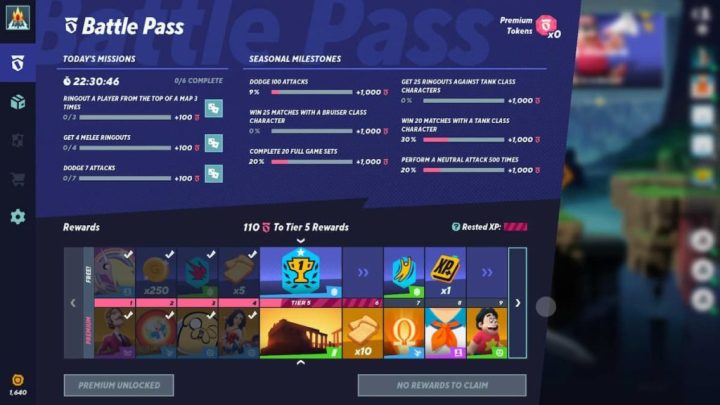When Warner Brothers’ Super Smash Bros.-like fighting game Multiversus launched last year, it was an immediate success. Players flocked to the free-to-play game in its first few months, battling it out as their favorite WB characters. It seemed like the publisher had a rare hit on its hand, breaking through to the mainstream with a genre that’s long been painted as a difficultyniche with a high barrier for entry.
Sadly, its moment in the sun might be coming to an end already. Last week, Video Games Chronicle reported that the title’s daily peak Steam player count had dropped over 99% since its release. Mutiversus, a fighter that many believed was a shining example of how the fighting genre can adapt to a free-to-play world, fell under 1,000 players for the first time. That doesn’t mean that the genre isn’t a good fit for the business model; it just means that Multiversus may not have been the best argument for it in the long-run.
A hype-driven start
Multiversus started off strong, fueled by a huge hype train with many variables in its favor. For fighting game fans, it was the answer to a lot of prayers. It was a Smash Bros. clone that actually seemed like it stood a chance at success thanks to WB’s serious investment in it. That left players hopeful that it would get a healthy competitive scene with massive prize pools to be won. It helped that a star-studded roster leak built some excitement early on too. And who can forget the fact that the middling Nickelodeon All-Star Brawl had been released previously and Multiversus stood to capitalize on a newfound hunger for a good Smash rival?

Any time a new fighting game launches, its always driven by promises of a strong competitive future, perfect communication from developers, and great support for the community. Multiversus followed that same playbook in its marketing efforts, But like all fighters, the curse of a heavy drop-off put a dent in its rich future right out the gate. While that slowdown happens in most fighting games, a 99% fall in players for a game this large isn’t anything to write off. Sadly, the writing may have been on the wall since day one.
While fans generally seem to enjoy the core gameplay, that doesn’t mean it didn’t contribute to the drop-off. Since its launch, Multiversus felt like it was trapped in a beta purgatory. Even after months, an unfinished feeling always loomed over the fighter. From a small pool of attacks to a very unreliable dash and questionable cooldown mechanics, the game has felt like a work in progress since launch. Most fighting games require a bit of patchwork post-launch, but Multiversus didn’t hide that fact as well as its rivals.
Take its bland presentation, for instance. I remember first starting the game and being hit with a bland background that looked like a Windows desktop. When I matched into a round, I was greeted by a solid blue screen. There wasn’t much personality to hook me in.

It’s the exact opposite feeling I had when I jumped into Street Fighter 6’s beta and was greeted with a loud-and-proud logo, stylish designs, and an announcer yelling the title of the game in my ear to hype me up. That unapologetic flair and powerful energy that fighting games are known for were completely missing from a huge crossover title featuring cartoon characters. That can hurt fighting game retention, even if its operating on a subconscious level. Compare a match in Marvel vs Capcom, with its comic-inspired visuals and loud and memorable music, to the empty stages and generic orchestral music of Multiversus. These were common complaints right out the gate and they contributed to players losing interest in the game long-term.
A not-so-live service
The other half of the drop in player retention can be traced back to the side of the game that’s supposed to pull in money. The core of Multiversus comes from leveling up characters, completing daily missions, and finishing a battle pass to unlock more characters and costumes. These are all features common to live-service games like Fortnite, which are usually easy wins. In Multiversus? Not so much.
In order to get experience points and in-game currency to unlock characters, costumes, and icons, players have to complete daily missions. These tasks include things like defeating a player in a certain way, using specific characters, dodging attacks, defeating a class of characters, and more. Ever since launch, players have complained about the slow grind created by that dynamic. If you’re just hoping to play with your favorite character and be rewarded for doing so, you’re out of luck. Instead, Multiversus makes play feel like homework.

This all leads to Multiversus missing the main draw of a great fighting game: their ability to pull in a casual audience. Series like Super Smash Bros. and Marvel vs Capcom aren’t just remembered for being these huge celebratory crossovers, but more because they don’t forget their audiences. Marvel, Capcom, and Nintendo fans consist largely of casual gamers who want to play a game simply for a fun experience. They don’t want to be tied down to a grind, and that’s where casual modes like Arcade come in, as well as the ability to enable wacky items. These are staples of the fighting game genre because they give players something to do other than play online. Multiversus, a game starring even more casual-oriented properties, forgot those important touches, effectively leaving its casual following behind in the long run.
Multiversus will certainly be a talking point for years to come for the “free-to-play fighting games” argument, but I don’t believe it means the business model can’t work in the genre. This is simply an example of how not to do it.
Editors’ Recommendations
Services Marketplace – Listings, Bookings & Reviews
